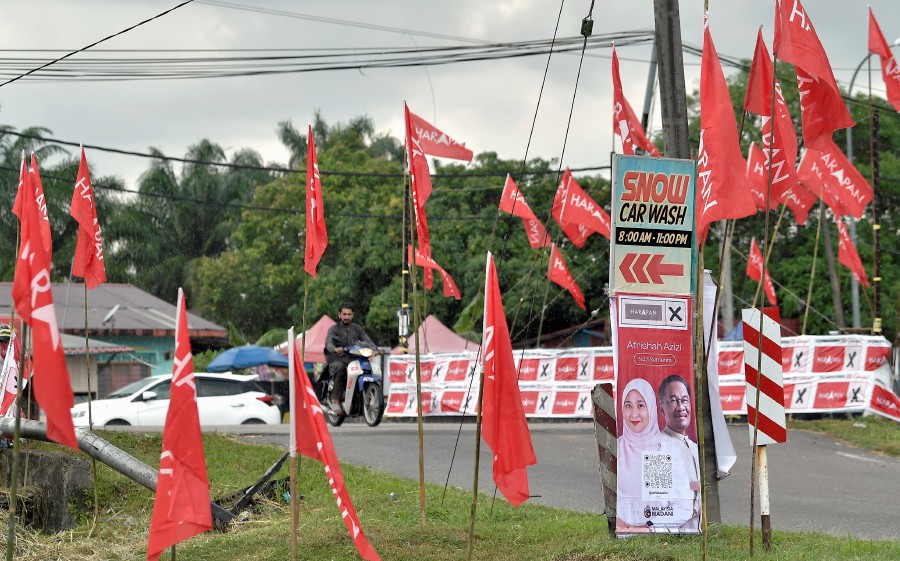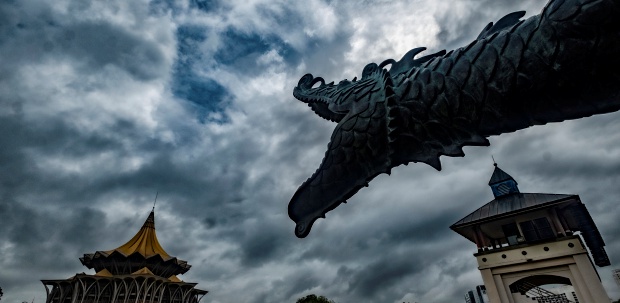KUALA LUMPUR: Seventy-six state assembly seats out of a total of 132 in the states of Selangor, Penang and Negri Sembilan are in areas where the number of Indian voters are more than 10 per cent.
It is believed that this number of voters can be a decisive factor that can influence the outcome of the state elections for the three states, especially when the Malay vote is expected to be split and the forecasted low voter turnout among the Chinese community.
This will determine whether the Pakatan Harapan (PH)-Barisan Nasional (BN) coalition will be able to retain power in the three states, or whether it will be wrested by Perikatan Nasional.
In Selangor, 13.9 per cent of 3.7 million registered voters in the state are from the Indian community, while in Penang, 11.8 per cent (1.2 million voters) and in Negri Sembilan it is 15 per cent (864,425 voters.)
Selangor is the state with the most number of state seats with more than 10 per cent of Indian voters, with 10 seats where the Indian electorate number more than 20 per cent.
This includes Sentosa, (41 per cent) followed by Rawang (25.7 per cent), Meru (24.5 per cent), Ijok (24.2 per cent), Seri Setia (23.4 per cent) and Sungai Tua (23.2 per cent).
Apart from that, there is also, Kota Kemuning (23.1 per cent), Pandamaran (22.7 per cent), Banting (22.5 per cent) and Bukit Melawati (21.9 per cent).
For Penang, there are 19 state seats with an electorate of Indian voters numbering more than 10 per cent, with the most being in the Perai area, with 35.64 per cent.
Bagan Dalam has a sizeable number of Indian voters on the electoral roll at 26.5 per cent, followed by two other state seats recording more than 20 per cent, which are Jawi (25.5 per cent) and Sungai Pinang (20.1 per cent).
In Negri Sembilan, there are 20 state seats with more than 10 per cent of Indian voters, with the most being in the area of Jeram Padang (33.6 per cent).
There are 10 state seats that have a total number of Indian voters above 20 per cent, which are Sri Tanjung (28.1 per cent), Rantau (27.4 per cent), Seremban Jaya (27.2 per cent), Lukut (26.2 per cent) and Mambau (25.7 per cent).
The other state seats are Rahang (22.6 per cent), Kepayang (22.2 per cent), Nilai (21.6 per cent), Lobak (21.5 per cent) and Chuah (21.4 per cent).
Speaking on the influence and impact of Indian voters in the run up to the state elections, Universiti Sains Malaysia (USM) political analyst Professor Dr Sivamurugan Pandian said when there was a split or division in the support of Malay voters, especially when having to choose between PH-BN or PN, the Indian voters would be the deciding factor.
"This adds to the prediction that many Chinese voters might not go out to vote during the upcoming state elections.
"Let's say about only 10 to 15 per cent come out to cast their votes, this contributes to the importance and relevance of Indian voters in areas where there are many of them.
"This is the reason why we cannot cast aside or ignore the support from the Indian community at these 76 areas because it can have quite a big impact," he told Berita Harian.
On the prediction that many Chinese voters will not come out to vote, Sivamurugan said this was based on previous state elections where the percentage of voter turnout was low.
Meanwhile political analyst Ramany Krishnan expects Indian voters in the three states to be split in two, supporting PH-BN and PN.
Ramany, who is also the president of the Malaysian Indian Graduates Association (MIGA), said many voters from MIC are not expected to cast their votes and might refuse to support or campaign for PH candidates because of differences in ideology and political culture.
"The issue of Indian candidates from DAP in general is unsatisfactory. Conflicts that cannot be resolved and internal party issues have forced many leaders and Indian voters to find alternatives.
"For them, PN is an alternative, but political propaganda, statements on race and the issue concerning candidates (new faces) representing the Indian community still leaves a question mark," he said.
However, Nusantara Strategic Research Academy (NASR) senior fellow Azmi Hassan believes that Indian voters will not be the deciding factor because a many of them are in fact Pakatan Harapan (PH) supporters.
"Even though there are state seats where there is a high percentage of Indian voters, exceeding 20 per cent, a big number of them are staunch supporters of PH, especially DAP.
"So, even though MIC had issues with BN before this in terms of seats, it will not dampen nor effect the voter support towards PH. There might be an impact for BN, but perhaps just a bit," he said.





